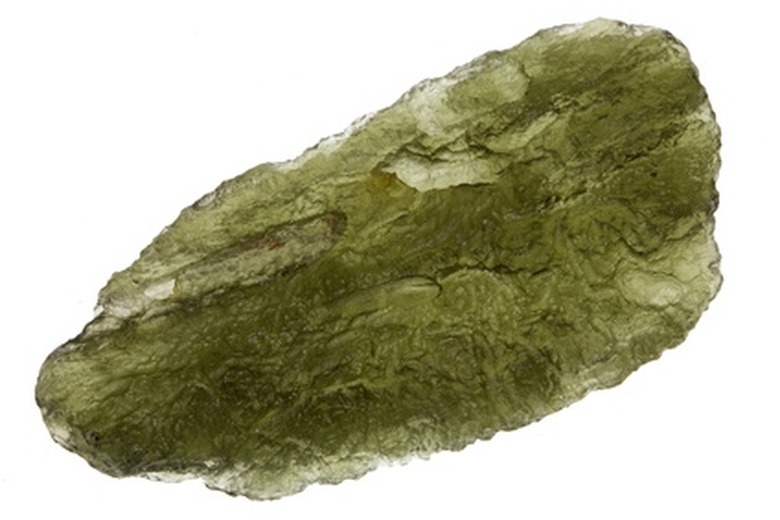What Is Moldavite?
Occurring over the Moldau Valley of the Czech Republic approximately 20 million years ago, a powerful meteor shower caused this region to be covered in small, green, glass-like objects called tektites. The classification of tektite that is specific to this region is called moldavite. Considered the rarest mineral-like gems on Earth, moldavite is like no other specimen found on our planet. It has been prized throughout history, and today moldavite is still fashioned into jewelry. Some believe that moldavite carries special properties that can aid the wearer on their spiritual journey.
Theory
Theory
Once believed to have been caused by lightning striking quartz crystal, there is now a more pervasive theory about the formation of moldavite. Today the most favored theory suggests that when a large meteorite impacted this area, rock material from the earth was hurled up into space. As earth's gravity pulled the rocks back into our atmosphere, they partially melted, causing the structure and composition that is particular to moldavite. Supporting this theory is the chemical similarity between some earth rocks and tektites, as well as the composition of gas bubbles in moldavite stones.
History
History
Moldavite is also known as the Grail Stone, as it is believed to have been the green stone in what is known as the Holy Grail. During the Middle Ages, only those who were considered royalty or the highest nobility, wore jewelry fashioned out of moldavite. Moldavite has historically been used in tool making, as well as being displayed in pendants and as heads of walking canes in Central Europe. Moldavite's first formal exhibition took place in Prague in 1891.
Properties
Properties
Green and translucent, moldavite has a chemical composition which is similar to granite and impure sandstone. Moldavite consists primarily of silica, with smaller amounts of iron, magnesium, calcium, potassium and titanium present. As these components did not have time to form crystals before they hit the earth, they cooled quickly to form a glassy substance. Moldavite is a fairly soft form of tektite, as it is only 2.8 on Moh's scale. Considering this, special care should be taken when wearing it as jewelry. Bumping the stone against a hard surface may damage the moldavite.
Practical Uses
Practical Uses
Although mining of moldavite has ceased, the demand for moldavite is still present. Some may prefer owning an uncut moldavite stone, as their primary appeal may be linked to their unique individual characteristics and anticipated value as conversation pieces. Nevertheless, moldavite is still fashioned into many different types of jewelry such as earrings, pendants and rings. The cost of moldavite ranges from $2 to $22 per gram. As some believe in the unique metaphysical properties of moldavite, it has been added to products such as incense, bath salts, oils and perfumes.
Spiritual Applications
Spiritual Applications
One of the oldest known minerals used for talismanic purposes, moldavite has been treasured for thousands of years due to a belief in its powerful spiritual energies. Some people believe that moldavite helps to awaken and accelerate spiritual awareness and cosmic consciousness. Moldavite is believed to contain excellent healing properties. In Czech folklore, moldavite crystal was also believed to bring harmony and peace to marital relationships.
References
Cite This Article
MLA
Gentry, Pamela. "What Is Moldavite?" sciencing.com, https://www.sciencing.com/moldavite-5114324/. 24 April 2017.
APA
Gentry, Pamela. (2017, April 24). What Is Moldavite?. sciencing.com. Retrieved from https://www.sciencing.com/moldavite-5114324/
Chicago
Gentry, Pamela. What Is Moldavite? last modified March 24, 2022. https://www.sciencing.com/moldavite-5114324/
